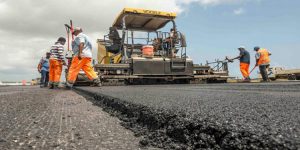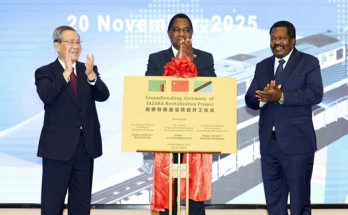 Tanzania and Kenya to benefit from EUR 345 million in funding accepted by the board of the African Development Bank (AfDB) in Abidjan for road construction assistance.
Tanzania and Kenya to benefit from EUR 345 million in funding accepted by the board of the African Development Bank (AfDB) in Abidjan for road construction assistance.
The Bank’s funding for the Phase I Mombasa-Lunga Lunga / Horohoro and Tanga-Pangani-Bagamoyo roads is in the form of loans from the African Development Bank and the African Development Fund, accounting for 78.5 percent of the overall project expense of EUR 399.7 million. The European Union contributed a EUR 30 million grant to the Government of Kenya, 7.7 percent of the overall project bill.
The road is a core component of the network of eastern African transport corridors linking Kenya and Tanzania. It would be easier for suppliers, producers and distributors to transfer products more easily and cheaply. In addition, increased access to local and regional markets and services, including better schools and health facilities, would help farmers and fishermen.
Hussein Iman, the Bank’s Regional Sector Manager for Transport, Private Sector and Industrialization, said that the project would have spillover benefits for hinterland countries such as the Democratic Republic of the Congo, Burundi, Rwanda, Uganda and South Sudan, which depend on Mombasa as a gateway to global markets.
By reducing travel times, promoting commerce and the cross-border movement of people and opening up links to visitor attractions, the Bank anticipates that involvement would improve regional integration. The project will also connect the ports of Dar es Salaam, Tanga and Mombasa and foster the coastal blue economy.
The first step includes the building of 175 km of road sections: Tanzania’s 121 km Mkanga-Pangani road segment and Kenya’s 54 km Mombasa-Kilifi road segment.
In the Bank’s Regional Development Plan for Eastern Africa (EA-RISP), the Nation Plan Papers (CSPs) of both nations, the intervention is a focus item and aligns with two of the Bank’s High 5 priorities: Integrating Africa and enhancing the standard of life for the citizens of Africa.
The Bank witnessed the signing of an agreement of $440 million between the Japan International Cooperation Agency ( JICA) and the Government of Kenya for the first step of the building of a bridge between the island of Mombasa and Likoni, East Africa’s largest international port city.
The Mombasa Gate Bridge will be Africa’s longest cable-stayed bridge, providing a vital link to the just accepted Mombasa-Lunga Lunga / Horohoro and Tanga-Pangani-Bagamoyo corridor phase I over the Indian Ocean.
When future stages of the project are completed, the overall volume of co-financing is estimated to be more than $1.2 billion, the highest co-financing deal between the Bank and JICA.
Nnenna Nwabufo, Acting Director-General of the Bank for the East Africa Region, said at the signing, “We are sure that we will all work together to achieve this important challenge and other ventures in the future.
The Kenya portfolio of the Bank consists of 27 public and seven private activities with a combined investment of EUR 2,7 billion. In Tanzania, the Bank’s portfolio includes 21 public and 2 private activities, with a cumulative commitment of EUR 1,82 billion.



